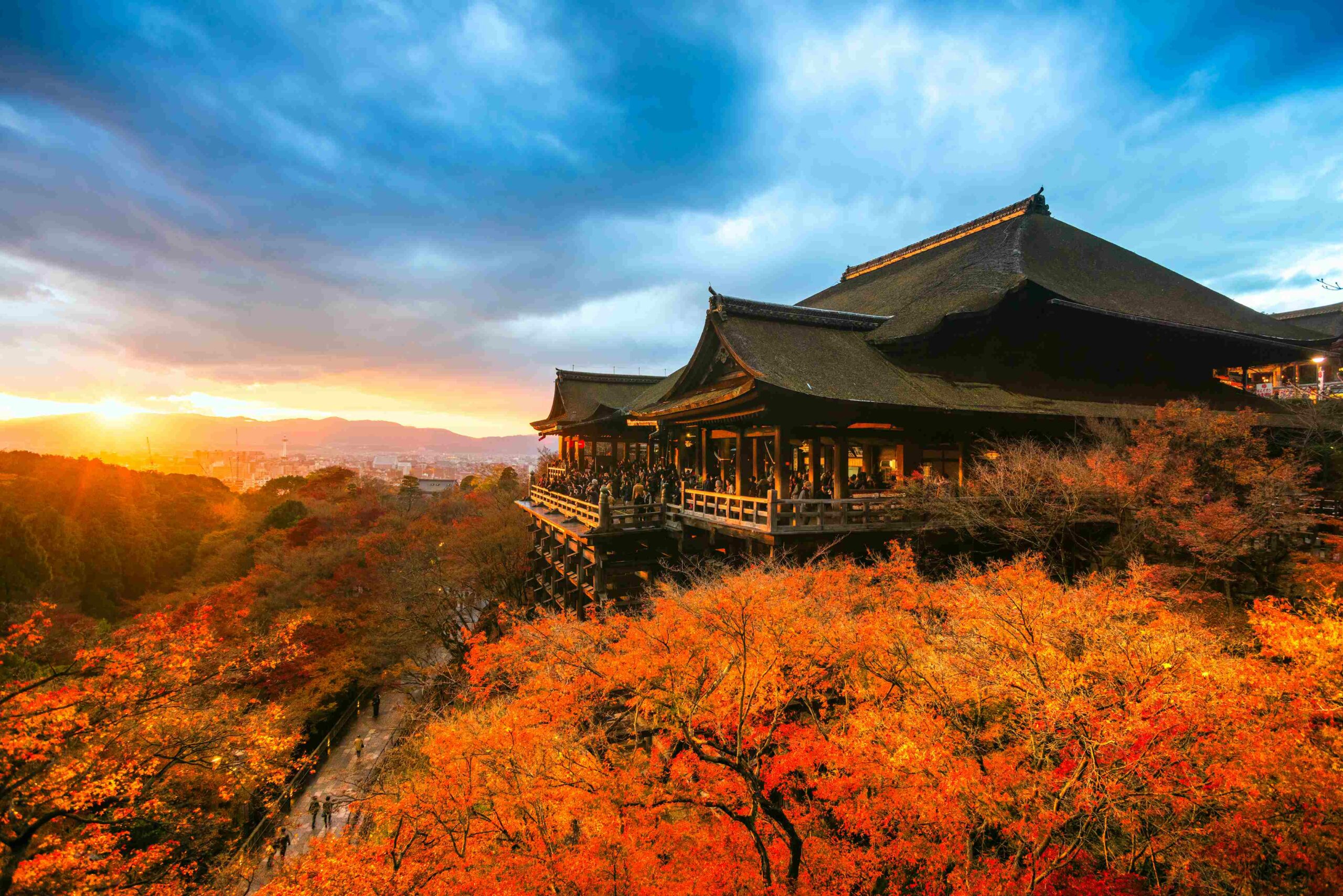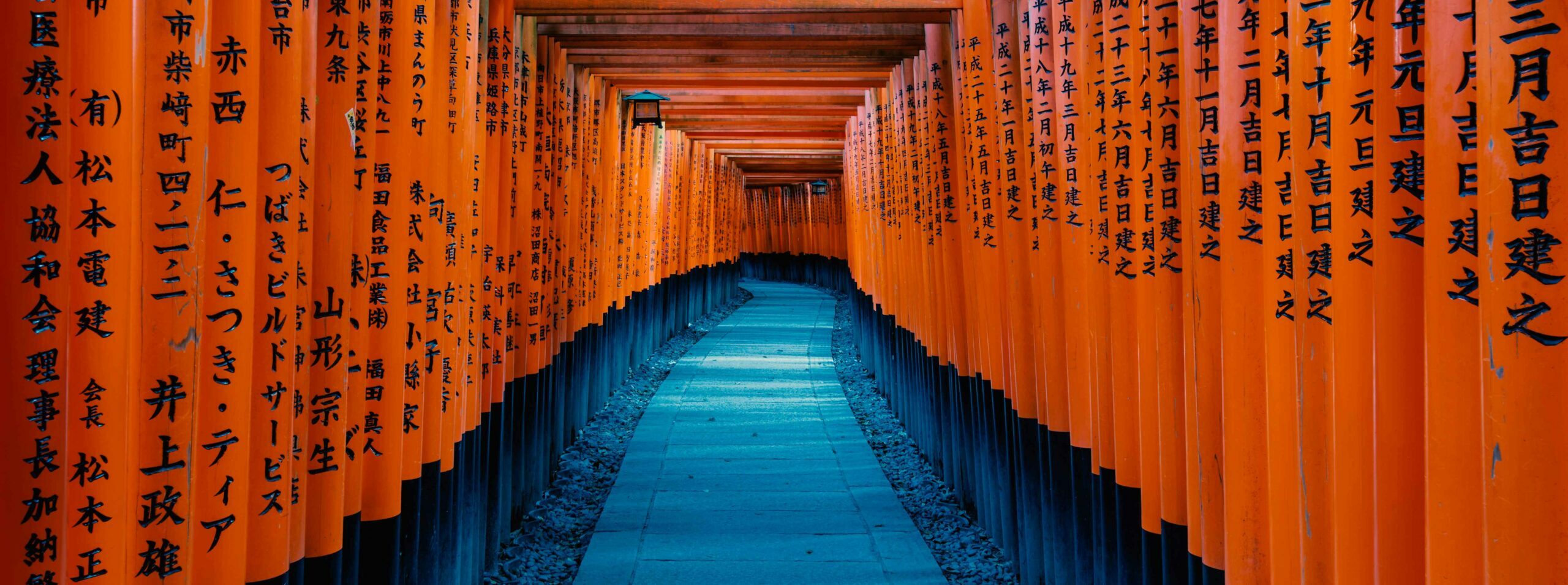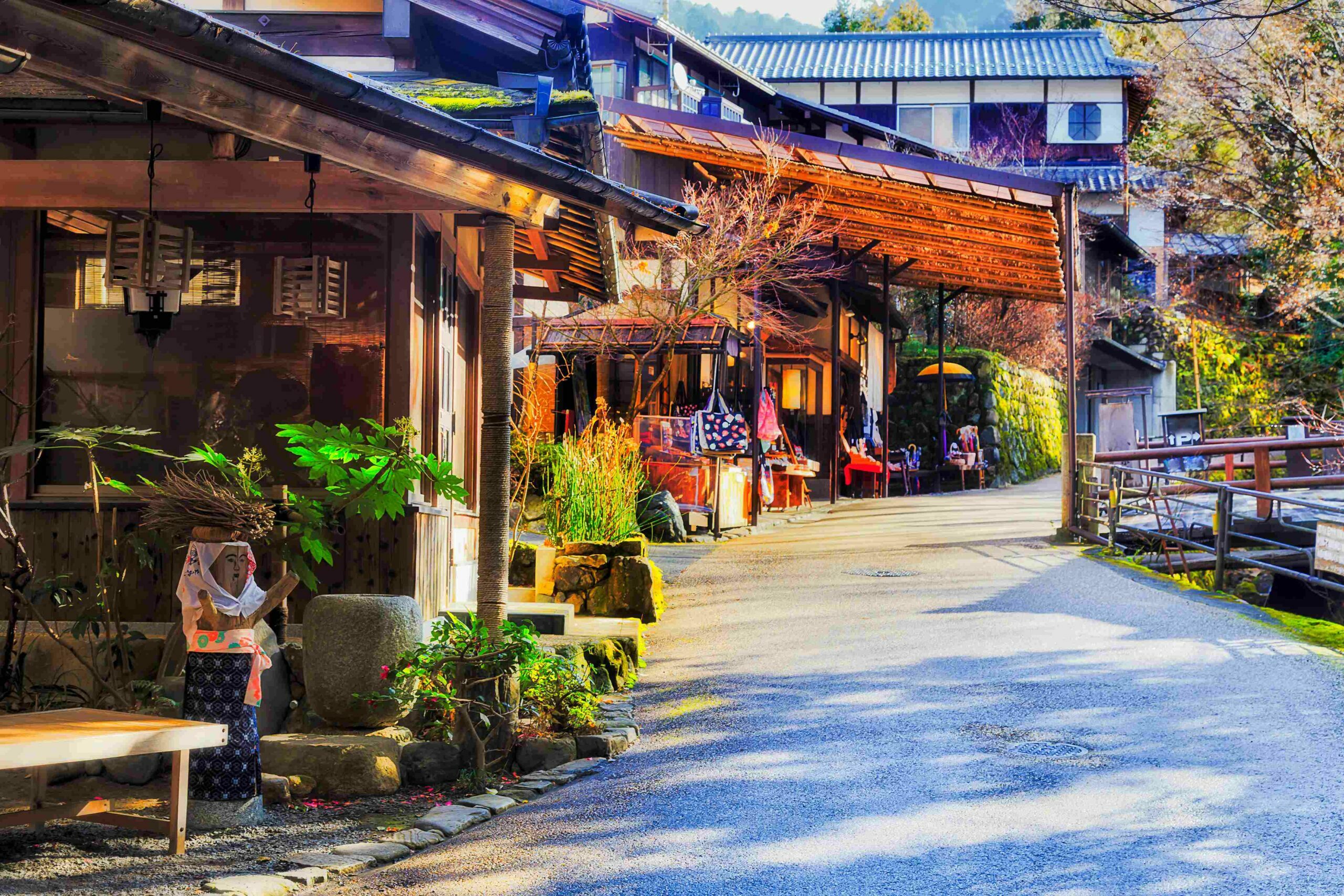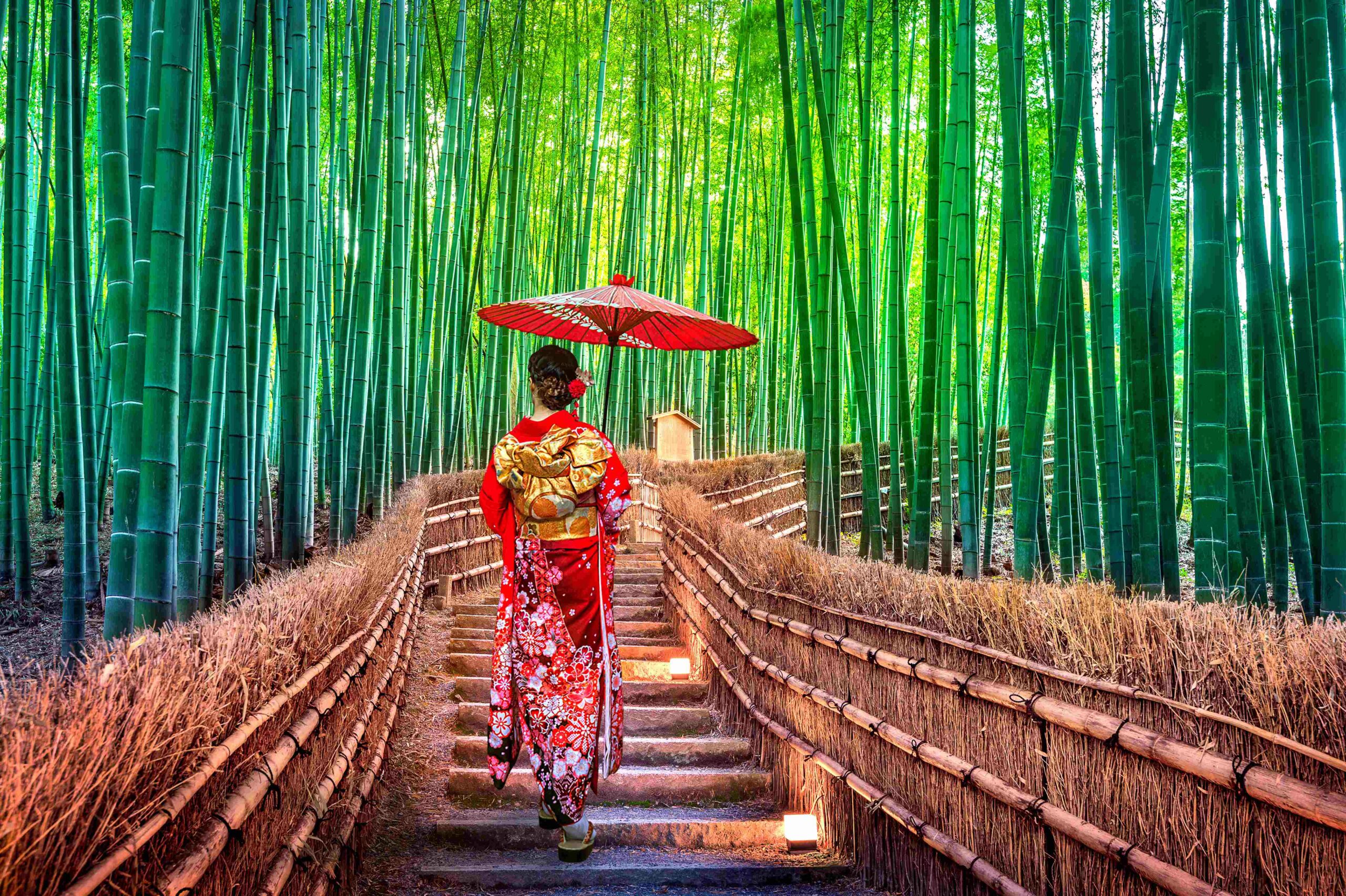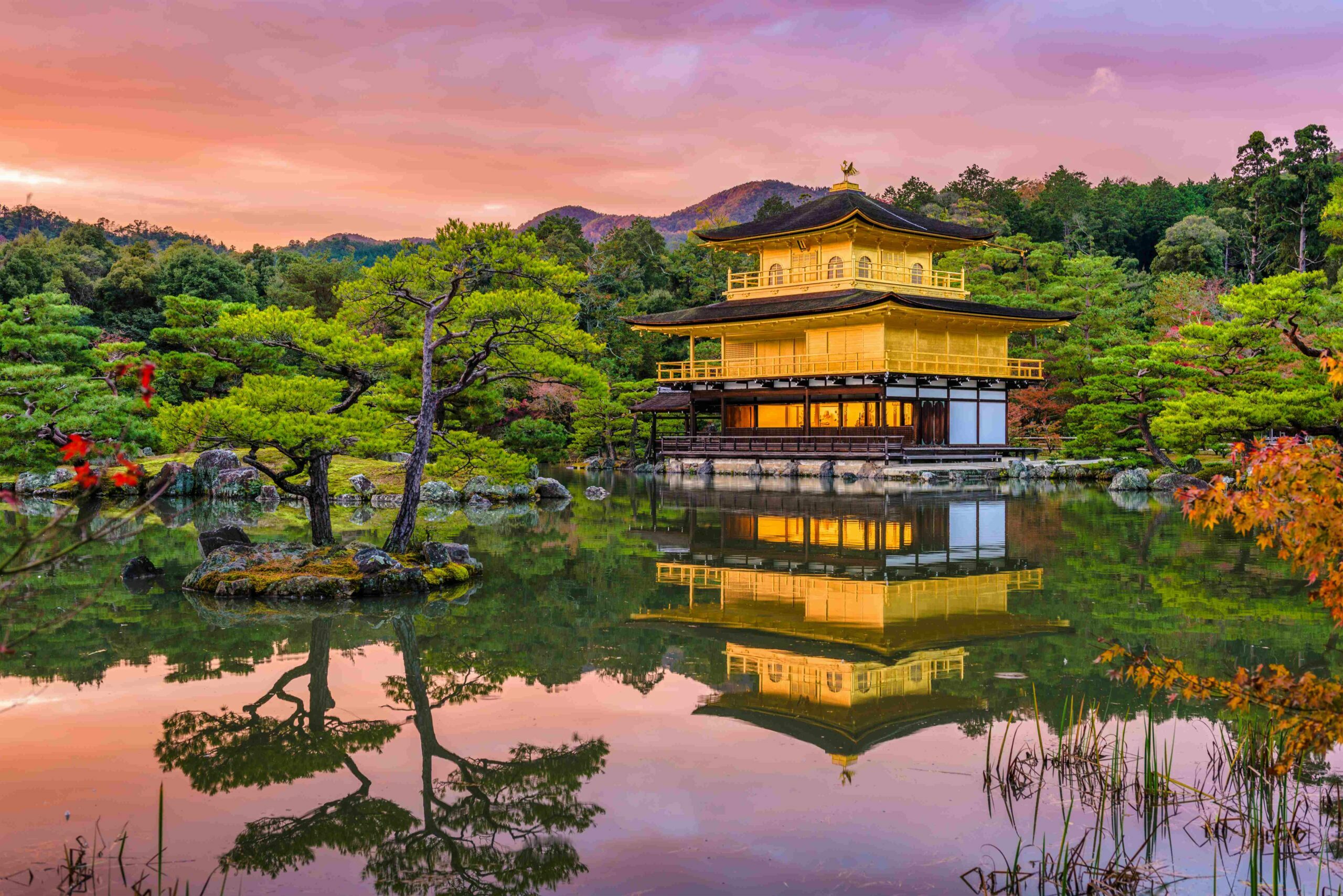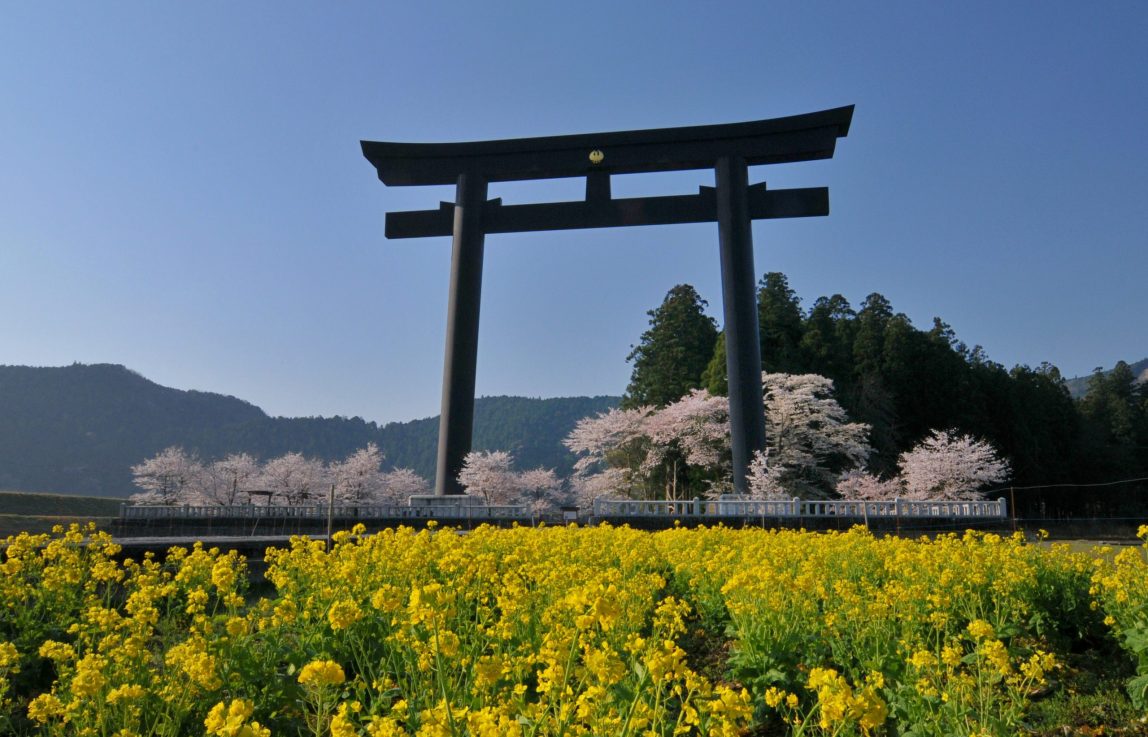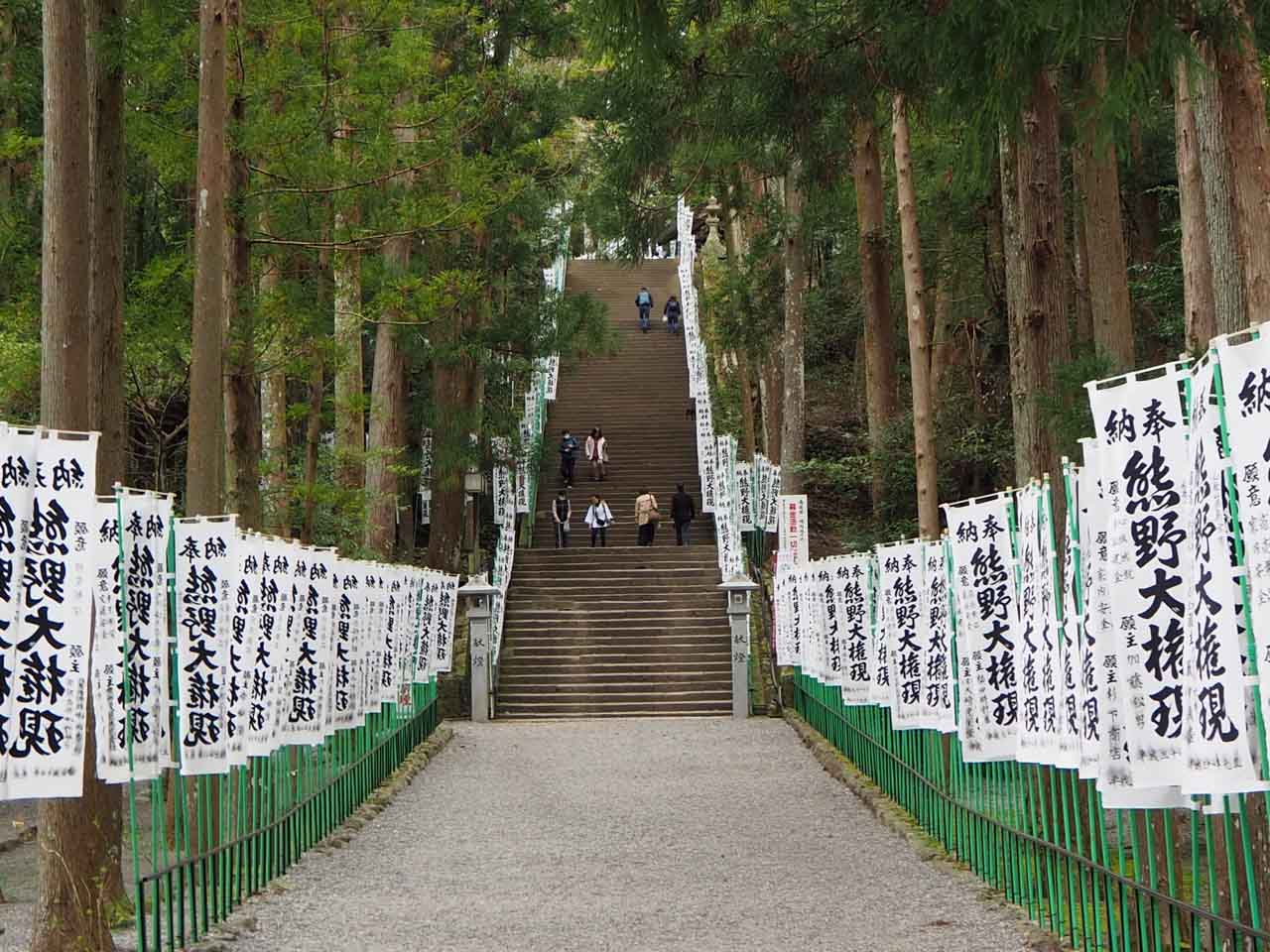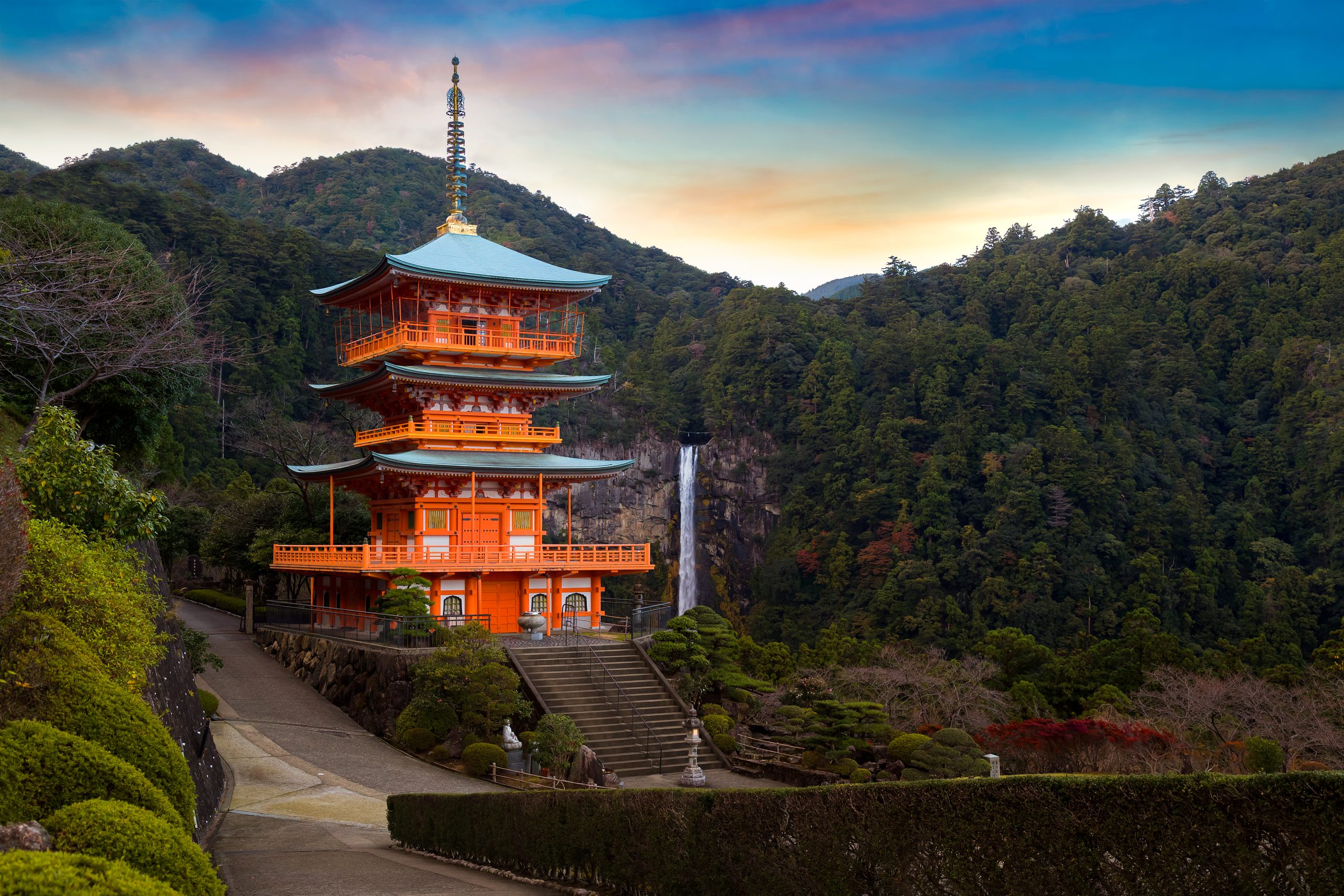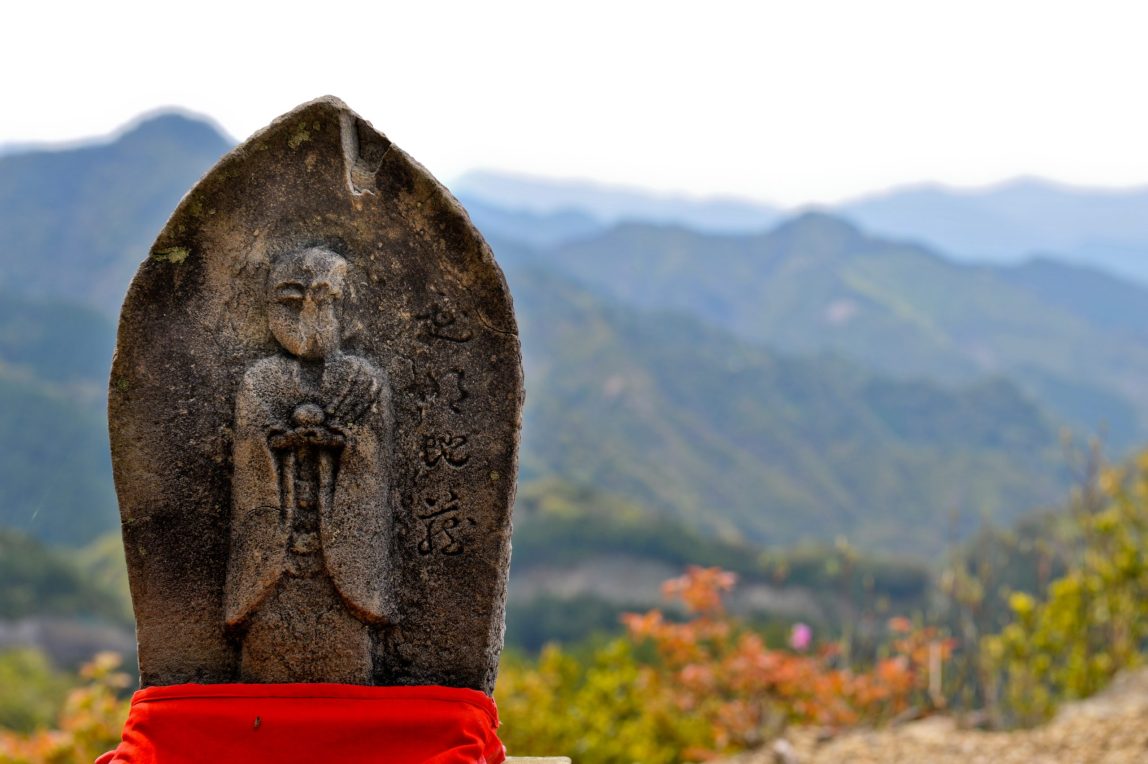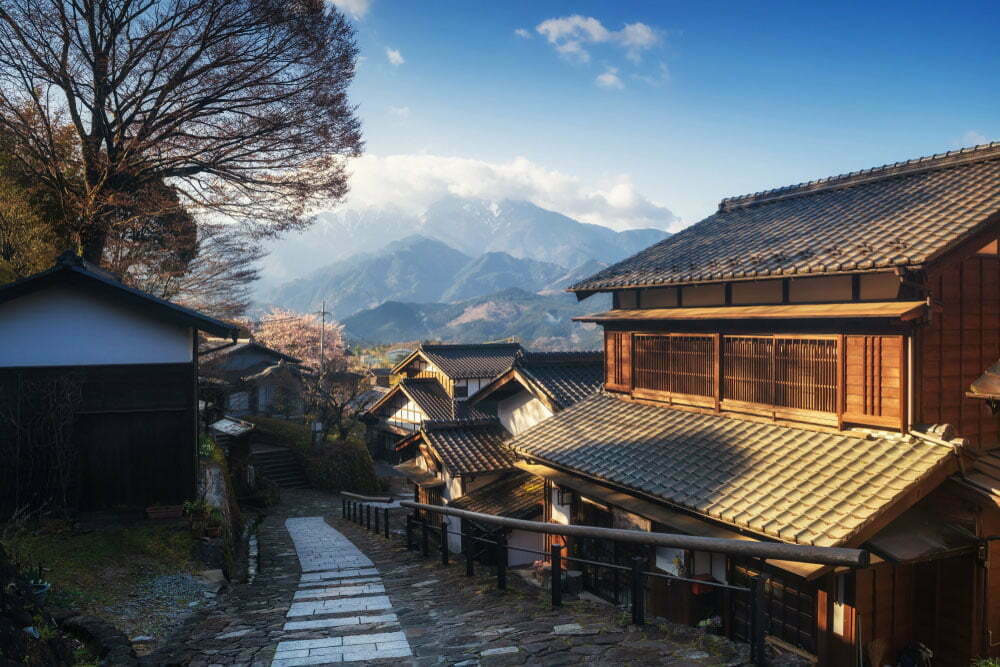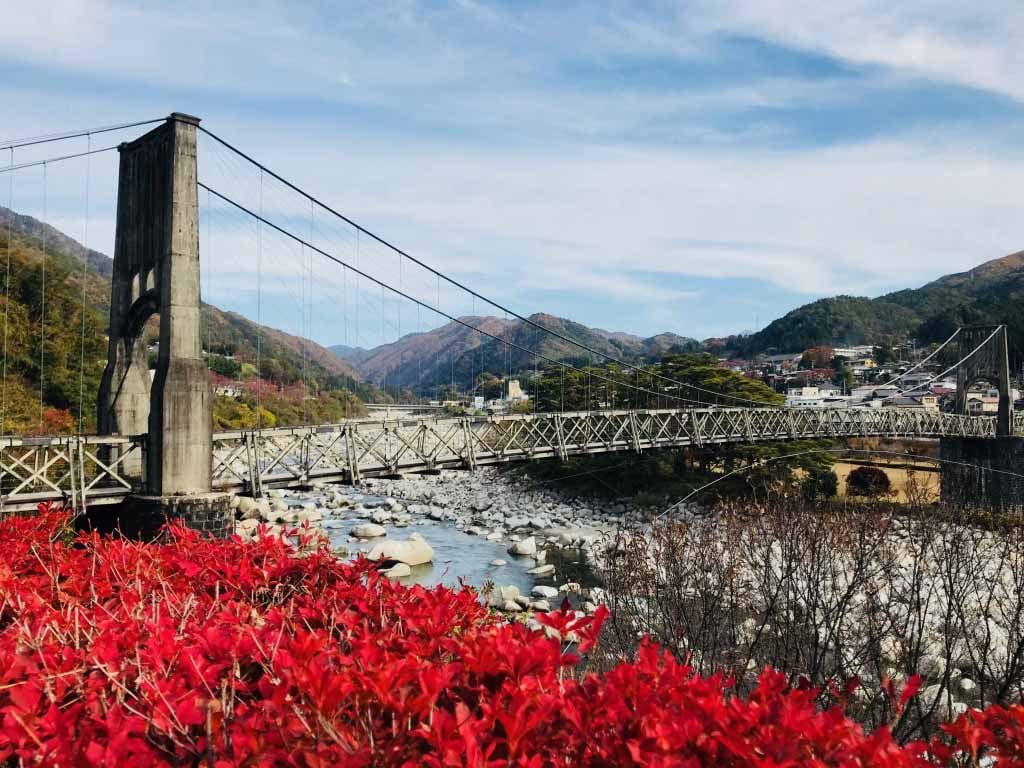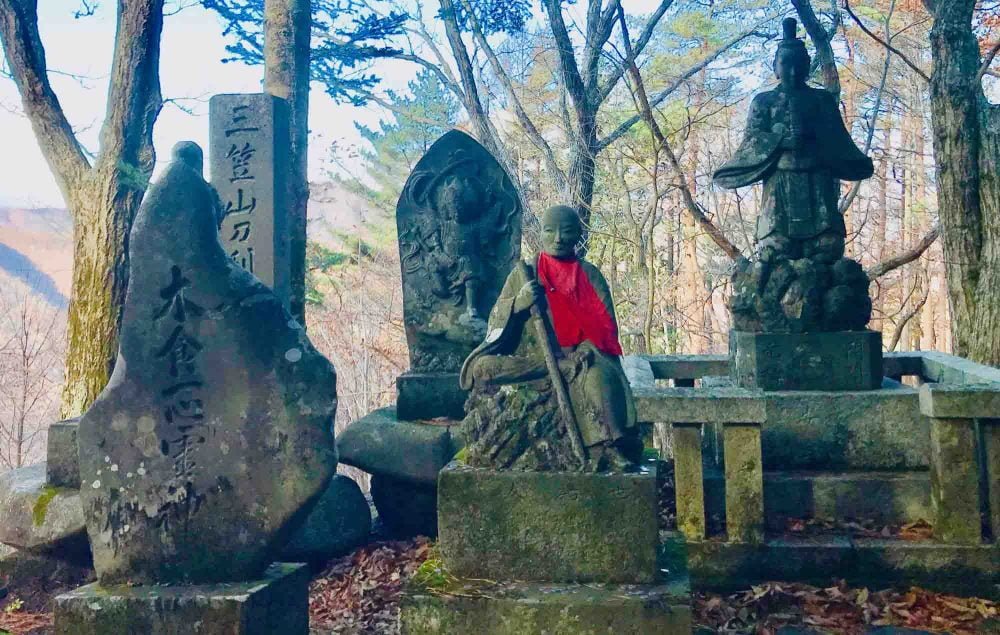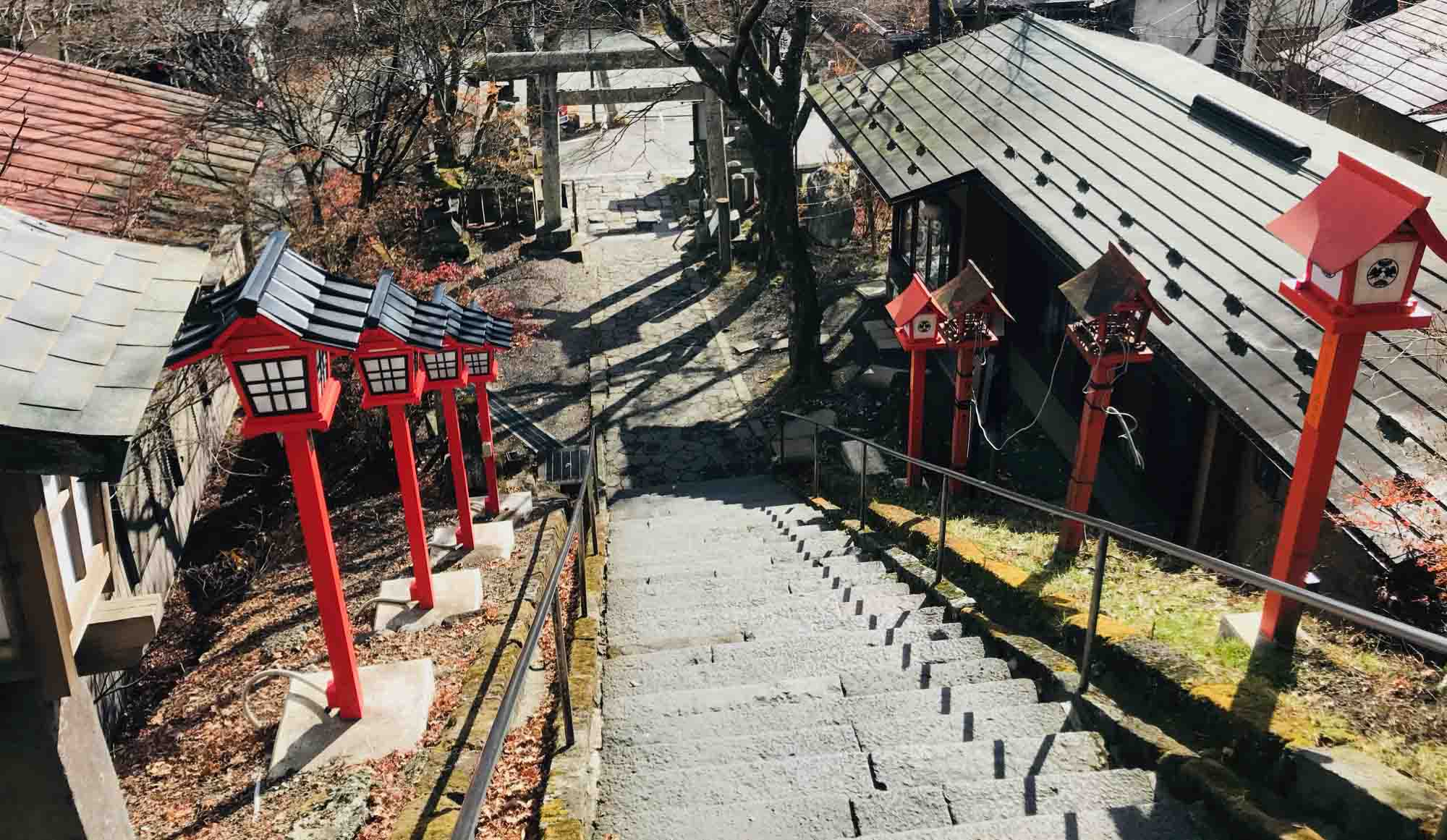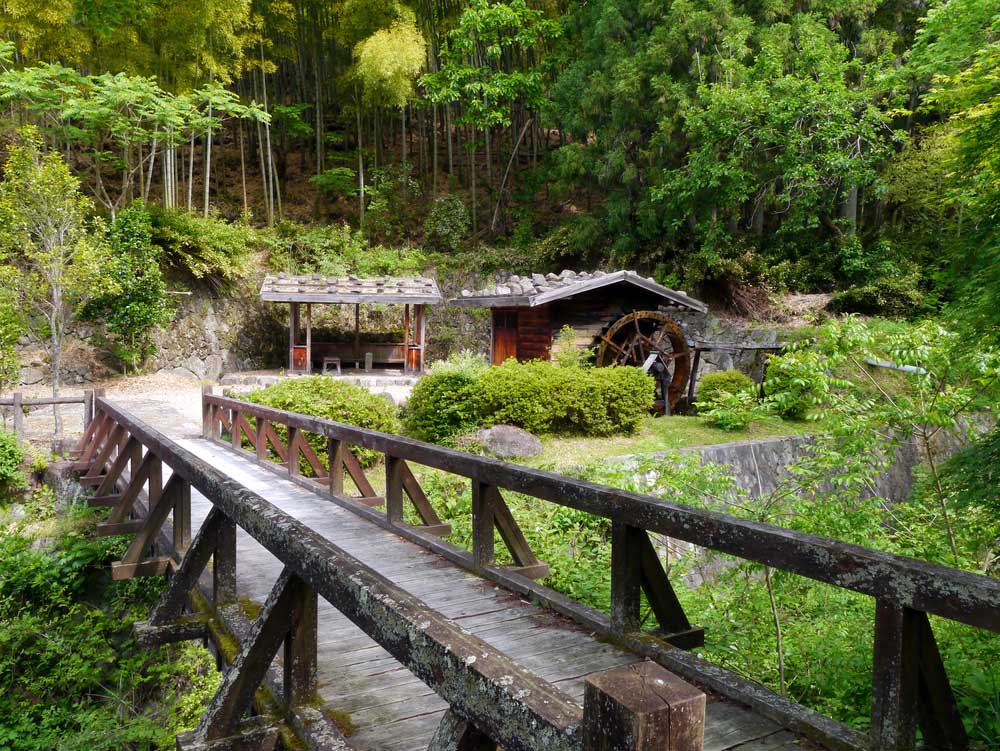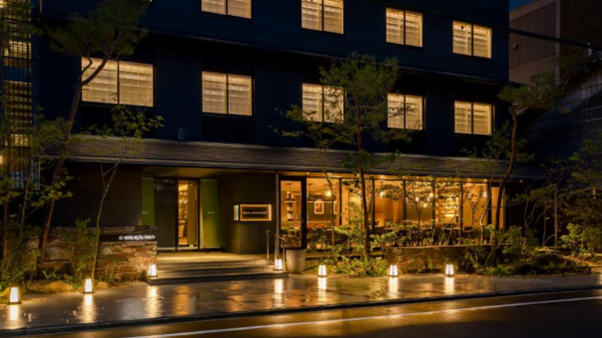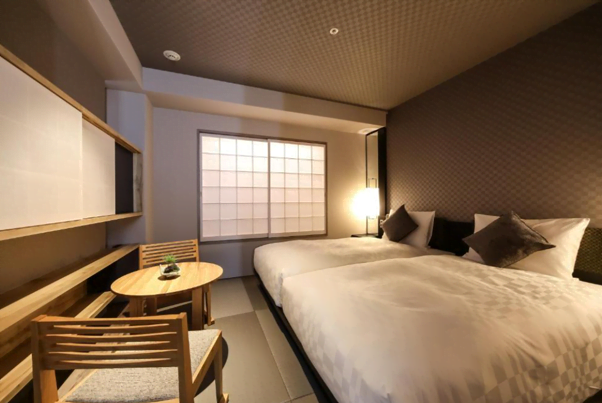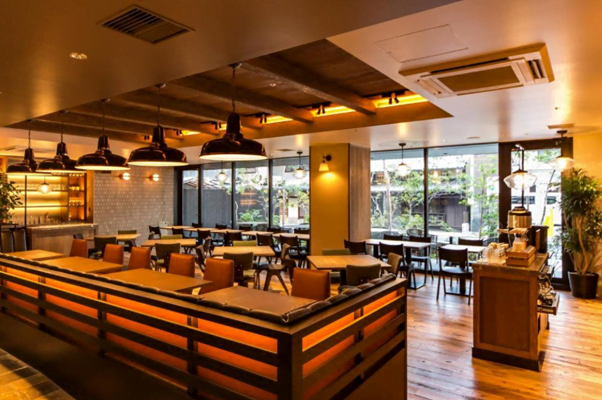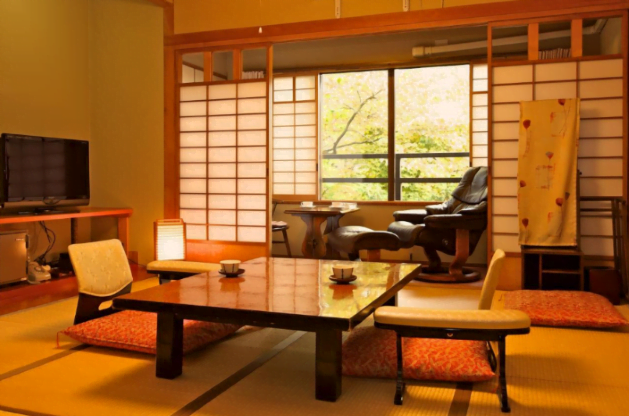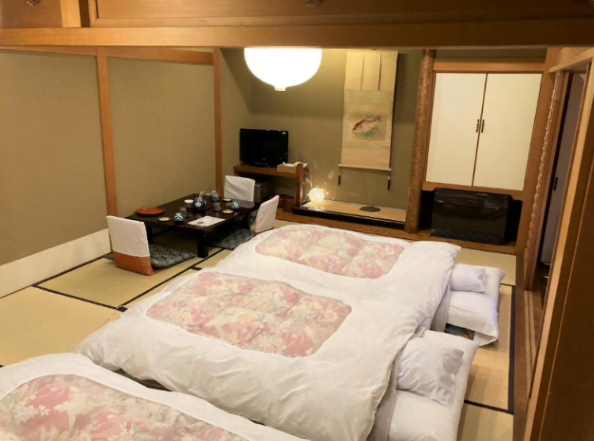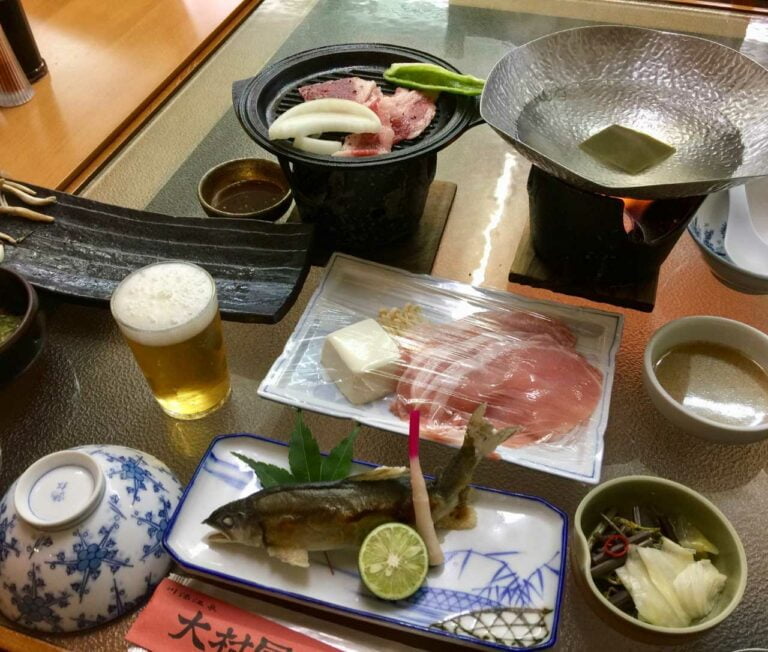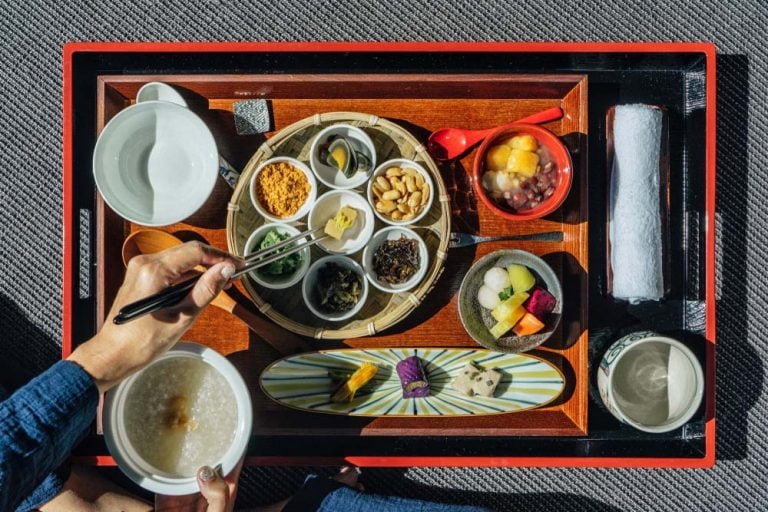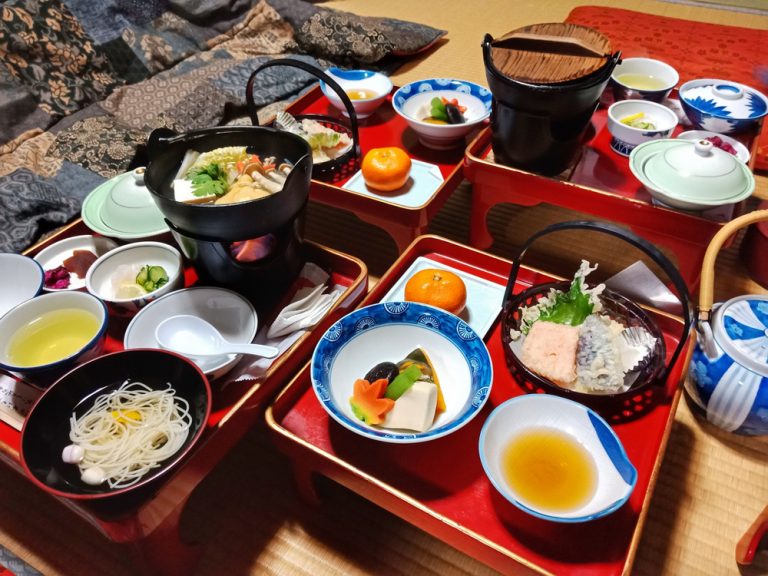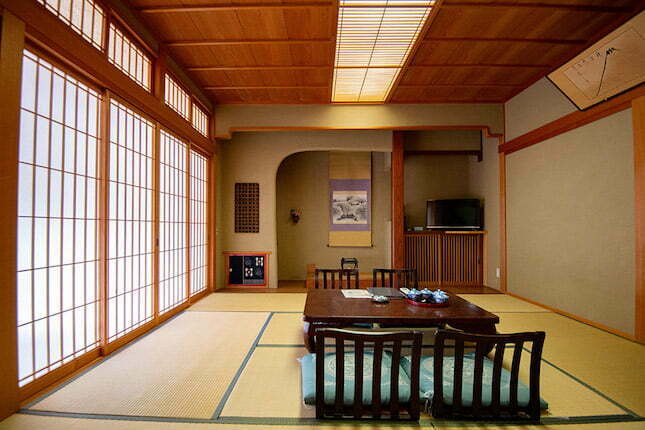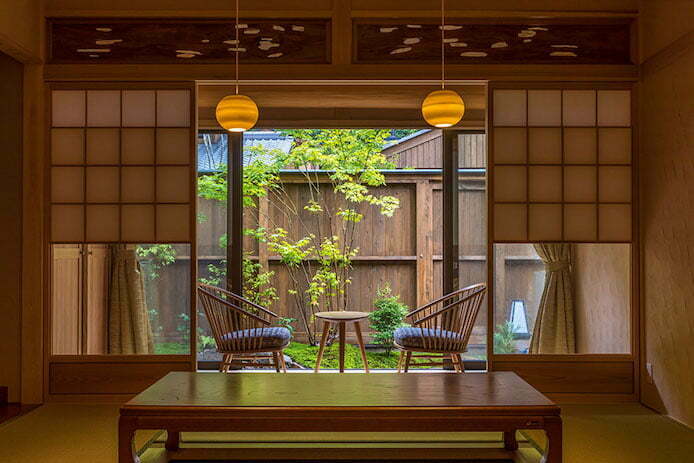 30 years' experience providing walking holidays worldwide
30 years' experience providing walking holidays worldwide-
SELF-GUIDED
-
14 DAYS
-
Moderate to Challenging
OVERVIEW
OVERVIEW
Deep dive into Japanese heritage and culture by exploring Kyoto, the Kumano Kodo and the Nakasendo on foot.
Walk seamlessly via forest and mountains on the Kyoto Trail from temple to temple, and from shrine to shrine. From Fushimi Inari walk away from the crowds and through the Imperial family’s graveyard. The hike to Kurama Temple and Arashayama are included, and there’s also extra time to visit the Golden Temple, Nijo Castle and the Imperial Palace.
Walk three days on the UNESCO world heritage listed Kumano Kodo via the sacred Kumano mountains and the Kii Peninsula. The Buddhists believe this pilgrimage effectively purifies the mind, soul and spirit. Even if you’re not religious, experience a real sense of improved well-being on completion.
The 500km long Nakasendo trail (literally meaning the ‘Middle Mountain Way’) has become one of Japan’s most famous hiking routes because of its breathtaking scenery. Walk the four best days on the Nakasendo walk. Shrines and waterfalls dot the landscape as you make your way through the Kiso Valley, wedged between the sacred mountain of Mount Ontake and Mount Komagatake.
HIGHLIGHTS:
- Discover the magic of Kyoto and its magnificent temples, beautiful mountains and waterways
- Chion-in Temple, with its massive Tori Gate and gorgeous Japanese gardens
- Traverse ancient paved paths, through well-preserved Japanese towns
- Soak up the cypress and cedar forest, alongside peaceful rural Japanese scenery
- The jaw-dropping orange Seiganto-ji Temple and the sacred Nachi waterfall
- The picturesque Kiso Valley and traditional post towns
- Walks that weave up forested hillside and grand mountain views
ITINERARY
WHAT’S INCLUDED
- Walk with a light pack on the 3 best days on the Kumano Kodo Nakahechi and the 4 best days on the Nakasendo
- Fully immerse yourself in Kyoto over 4 days including on the Kyoto Trail
- Luggage transfers from accommodation to accommodation ( see General Info section for details re the luggage transfers on the walks)
- 9 nights stay in an intimate family-run or small traditional Japanese lodgings, some with in-house onsens, and 4 nights stay in a Japanese Hotel in Kyoto
- Superb traditional multi-course meals including breakfast every day, 4 dinners and 3 lunches on the Kumano Kodo section and 4 dinners on the Nakasendo section. Please note on dinner free nights there are plenty of excellent restaurants to choose from within walking distance
- Itineraries can be flexible to shorten the walking days
- Enjoy worry-free navigation with Stroll’s comprehensive track notes and maps
- Note: the cost of trains, taxis if you choose to use them or entry fees into shrines or temples is extra. Please see the details in the General Info section
ACCOMMODATION & DINING
To ease you into it in Kyoto, we stay centrally and in Japanese lodgings, but with more facilities than the more traditional Japanese accommodations.
On the Kumano Kodo Nakahechi and the Nakasendo, you will stay in a lovely Ryokan or Minshuku each night. Ryokans are Japanese guesthouses that come in a variety of styles, from traditional wooden structures to more of a modern hybrid hotel. Expect to stay the way the Japanese stay.
Ryokans are Japanese guesthouses in various styles, from traditional wooden structures to modern hybrid hotels. Ryokans have Japanese-style rooms with tatami mats, shoji sliding doors, and futons for sleeping on. Few Ryokan Hotels have rooms with actual beds. The rooms may or may not have ensuites, but be prepared for a little luxury when it comes to the heated toilet seats. The bathing area is often the pride of the Ryokan, especially when they’re located in an onsen area. These are usually communal and separated by the two genders.
A Minshuku is a family-run accommodation that is often found in rural Japan. There is a fine line between a Minshuku and some smaller Ryokans, making it hard to distinguish between the two. Most minshukus are very small, with only a few Japanese-style rooms, a bit like a Bed and Breakfast, Japanese style. Staying at a Minshuku has its advantages, as it’s a good chance to meet the local people and get right up close to the Japanese culture. The atmosphere is often like that of a home with traditional meals served much like at a Ryokan but with even more intimacy. Be prepared, as baths and toilets are often shared.
Meals are elaborate affairs from a Western point of view served in a traditional dining area on the Kumnao Kodo and Nakasendo Way. A traditional Kaiseki set meal is what is usually offered. Sometimes there is the option of a buffet at the larger Ryokans.
GENERAL INFO
HIGH SEASON
In Japan, there are some periods when locals travel en masse as they are on holiday. These times are best avoided as the accommodation costs escalate considerably (more than double). It would make a lot of sense if you could avoid these times. Otherwise, see below for high-season periods. This could lead to the cost of the trip increasing by 30% or more.
NEW YEAR PERIOD – 30TH DECEMBER TO 4TH OF JANUARY
GOLDEN WEEK – GENERALLY BETWEEN 29TH APRIL TO 5TH MAY
OBON PERIOD – MID-AUGUST ( BETWEEN THE 10TH TO 20TH OF AUGUST)
Please speak to the Stroll team to get a quote for the above times
PUBLIC TRANSPORT
On this walk, you will have to catch some trains in between the destinations, which is pretty straightforward whilst walking within each destination. There are also two short bus rides on the Kumano Kodo.
These transfers are all outlined clearly and simply in the walk notes day by day as you go. None of these can be pre-booked, and is the best way to get around Japan and the most eco-friendly. This also includes whilst you are walking in the mountains on the Kumano Kodo and on the Nakasendo Way. All of these fares are at your own cost.
None of the transport costs a significant cost (i.e. 150 to 500 Yen) except for the transfers between the 3 destinations. The train fares could be from 5000 to 13000 Yen.
WHAT IS NOT INCLUDED
We have included meals when it makes sense, but when you are somewhere like Kyoto, with thousands if not more eateries, we have left you to your own devices. We try to make recommendations, but note that following the crowds and waiting in line is sometimes quite time-consuming. Walking around and tasting the variety of exceptional food is one of the highlights of Kyoto.
The entry fees into the numerous temples, shrines and gardens are not included. These can add up to about 2500 Yen a day. Trying to prebook these is not possible.
Some taxis (possibly 2 or 3) are recommended instead of the subway; these can be as much as 2000 Yen each. Taxi travel in Japan is at Western prices, but it is very efficient – taxis are everywhere and easy to catch.
The above is straightforward and will be explained in detail in your walking notes. Note: we don’t advise organising private transfers, as these are very expensive in Japan and unlikely to enhance your experience.
It is necessary to carry cash as some purchases can only be made with cash. Japan is very safe.
AVAILABILITY
This walk is available all year round, but you may encounter some snow from December to February. Many people prefer to walk in spring to see the cherry blossoms and in autumn because of the change of seasons and the good weather. Summer is very hot in Kyoto, so either walk at another time or we suggest starting early each day.
HOW TO GET THERE AND AWAY
It makes sense to fly into Osaka and out of Tokyo. However, the price of tickets may be lower by flying in or out of one city. In this case, choose Tokyo. It is a short bullet and a very efficient train ride to Kyoto from Tokyo. The trip ends in Kuruizawa, a one-hour train ride to Tokyo.
Travelling to the start of the walk
The first part of this walk starts in Kyoto. If you arrive in Osaka, the train station is outside the airport. There are English-speaking people to buy tickets at the station. Once in Kyoto, unless you are staying at the upgrade (which is at the station), it is best to catch a taxi to your accommodation instead of dragging your bags.
From Kyoto, we catch a train to each of the destinations. The details are outlined in the notes you will receive six weeks out from departure.
By Air: The best option is to fly into Osaka (or Tokyo if it suits you or is way cheaper) and take the train from there. You can take the train direct from Osaka Kansai Airport to Kyoto. The train station is at the airport, and English-speaking staff are at the ticket office. You might consider spending some time in Osaka – an exciting city with many beautiful temples and Osaka Castle. In spring, it is wonderful. It also has a sophisticated restaurant culture and markets that seem to go on for kilometres.
By Rail: Japan has one of the best train systems in the world, so it’s straightforward to catch a train to any destination in the country. An express train is the fastest way to travel to the area. Travelling in Japan on trains is a seamless experience, and pre-purchase tickets are not always necessary. Plenty of rail staff speak English well enough to direct you the right way and converse with you about how to buy your ticket. We can provide more information if you wish, so please ask one of our destination consultants. Hyperdia is the best resource for planning your train travel in Japan.
Always pay for reserved seats to avoid the hassle of standing and also enjoy the added advantage of having a place to store bigger bags.
Travelling from the end of the walk
By rail: The train from Kuruizawa, the last destination, is not far from Tokyo. Going back to Osaka takes about 4 hours and costs about $150. You can choose to go to Tokyo or anywhere else, for that matter in Japan!
By Air: See above
LUGGAGE TRANSFERS
Luggage transfers are only needed on the Kumano Kodo Nacahechi and Naksendo routes. You will need to bring your luggage with you as you travel from Kyoto to the Kumano Kodo and to the Nakasendo Way. It is an unnecessary cost to incur having your luggage travelling separately from you.
On one of the days on the Nakasendo, you may not have your luggage. This is season dependent, and we will let you know if this happens. Yukatas and Japanese dressing gowns are provided in house so you will only need to carry the bare essentials.
WALKING
The walk is over 150 km in length and is moderate to moderate to challenging, with some long days if you wish. Full-day walks average about 15 km with 5 –8. hours walking each day; however, they can be as long as 24 km (you can shorten almost all the days). But with rest days in between, while travelling, this is very achievable. The walking is over well-maintained paths, but expect each day to start with some reasonable elevation gains. Fear not, the tracks do flatten out!
For what to bring, please refer to Gear Advice in our FAQ section.
WEATHER
From the end of March, the temperature begins to increase. In summer, it’s quite warm and humid but still possible to walk, particularly if you enjoy warmer temperatures and taking a dip in a stream. However, in Kyoto, it gets very hot at an average of 33 degrees Celsius with a humidity of 69%. In this case, it is best to avoid summer or be prepared to walk early in the morning in Kyoto. Walking early comes with the added benefit of avoiding the crowds all year round!
The walk is offered in winter, but bring warm clothes and good rain gear. The area is just as beautiful if not more and is not busy at all. Soaking in an outside onsen in the cool of the night is one of those authentic Japanese experiences you can look forward to after a big day on the track.
As walkers, spring and autumn are the best times as the weather is perfect for walking.
See the weather information about Osaka’s average weather at different times of the year.
INSURANCE
We require that you have adequate travel insurance against potential losses, damage or injury, including cancellation costs and loss of luggage.
For all trips requiring international travel, you must have purchased travel insurance including medical evacuation coverage.
We also charge a cancellation fee if you cancel your walking holiday after we have confirmed it to cover costs incurred by our suppliers and in the office. See the FAQ section for more information.
INFORMATION PACK
For nearly 30 years, we have taken pride in providing seamlessly organised walking holidays, but we know, even with that in mind, that you’ll have many more questions. You will receive a detailed information pack and itinerary approximately 6 weeks out from departure outlining all the fine detail and much more.
CONTACT
If you have any questions, feel free to ask one of our destination consultants or to speak with one of our guides. You can get in touch with us via our contact form or email us at info@stroll.com
MAP
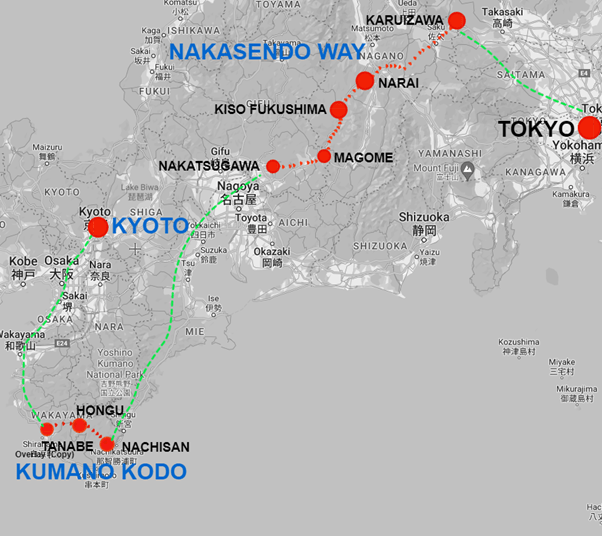
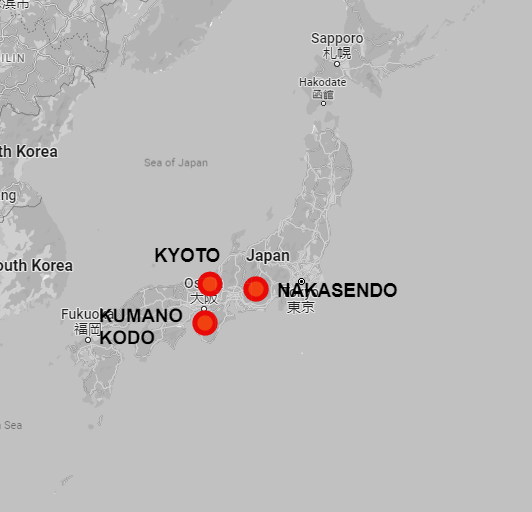
DEPARTURE DATES
-
DATESAVAILABILITYPRICESingle OccupancyDetails
-
1 Jan 2024 - 31 Dec 2024AVAILABLE
from £ 3505
SINGLE OCCUPANCY£ 700High season and weekend prices in Kyoto may apply
-
1 Jan 2025 - 31 Dec 2025AVAILABLE
from £ 3590
SINGLE OCCUPANCY£ 730High season and weekend prices in Kyoto may apply
-
1 Jan 2026 - 31 Dec 2026AVAILABLE
from £ 3190
SINGLE OCCUPANCY£ 775High season and weekend prices in Kyoto may apply
sections
Deep dive into Japanese heritage and culture by exploring Kyoto, the Kumano Kodo and the Nakasendo on foot.
Walk seamlessly via forest and mountains on the Kyoto Trail from temple to temple, and from shrine to shrine. From Fushimi Inari walk away from the crowds and through the Imperial family’s graveyard. The hike to Kurama Temple and Arashayama are included, and there’s also extra time to visit the Golden Temple, Nijo Castle and the Imperial Palace.
Walk three days on the UNESCO world heritage listed Kumano Kodo via the sacred Kumano mountains and the Kii Peninsula. The Buddhists believe this pilgrimage effectively purifies the mind, soul and spirit. Even if you’re not religious, experience a real sense of improved well-being on completion.
The 500km long Nakasendo trail (literally meaning the ‘Middle Mountain Way’) has become one of Japan’s most famous hiking routes because of its breathtaking scenery. Walk the four best days on the Nakasendo walk. Shrines and waterfalls dot the landscape as you make your way through the Kiso Valley, wedged between the sacred mountain of Mount Ontake and Mount Komagatake.
HIGHLIGHTS:
- Discover the magic of Kyoto and its magnificent temples, beautiful mountains and waterways
- Chion-in Temple, with its massive Tori Gate and gorgeous Japanese gardens
- Traverse ancient paved paths, through well-preserved Japanese towns
- Soak up the cypress and cedar forest, alongside peaceful rural Japanese scenery
- The jaw-dropping orange Seiganto-ji Temple and the sacred Nachi waterfall
- The picturesque Kiso Valley and traditional post towns
- Walks that weave up forested hillside and grand mountain views
- Walk with a light pack on the 3 best days on the Kumano Kodo Nakahechi and the 4 best days on the Nakasendo
- Fully immerse yourself in Kyoto over 4 days including on the Kyoto Trail
- Luggage transfers from accommodation to accommodation ( see General Info section for details re the luggage transfers on the walks)
- 9 nights stay in an intimate family-run or small traditional Japanese lodgings, some with in-house onsens, and 4 nights stay in a Japanese Hotel in Kyoto
- Superb traditional multi-course meals including breakfast every day, 4 dinners and 3 lunches on the Kumano Kodo section and 4 dinners on the Nakasendo section. Please note on dinner free nights there are plenty of excellent restaurants to choose from within walking distance
- Itineraries can be flexible to shorten the walking days
- Enjoy worry-free navigation with Stroll’s comprehensive track notes and maps
- Note: the cost of trains, taxis if you choose to use them or entry fees into shrines or temples is extra. Please see the details in the General Info section
To ease you into it in Kyoto, we stay centrally and in Japanese lodgings, but with more facilities than the more traditional Japanese accommodations.
On the Kumano Kodo Nakahechi and the Nakasendo, you will stay in a lovely Ryokan or Minshuku each night. Ryokans are Japanese guesthouses that come in a variety of styles, from traditional wooden structures to more of a modern hybrid hotel. Expect to stay the way the Japanese stay.
Ryokans are Japanese guesthouses in various styles, from traditional wooden structures to modern hybrid hotels. Ryokans have Japanese-style rooms with tatami mats, shoji sliding doors, and futons for sleeping on. Few Ryokan Hotels have rooms with actual beds. The rooms may or may not have ensuites, but be prepared for a little luxury when it comes to the heated toilet seats. The bathing area is often the pride of the Ryokan, especially when they’re located in an onsen area. These are usually communal and separated by the two genders.
A Minshuku is a family-run accommodation that is often found in rural Japan. There is a fine line between a Minshuku and some smaller Ryokans, making it hard to distinguish between the two. Most minshukus are very small, with only a few Japanese-style rooms, a bit like a Bed and Breakfast, Japanese style. Staying at a Minshuku has its advantages, as it’s a good chance to meet the local people and get right up close to the Japanese culture. The atmosphere is often like that of a home with traditional meals served much like at a Ryokan but with even more intimacy. Be prepared, as baths and toilets are often shared.
Meals are elaborate affairs from a Western point of view served in a traditional dining area on the Kumnao Kodo and Nakasendo Way. A traditional Kaiseki set meal is what is usually offered. Sometimes there is the option of a buffet at the larger Ryokans.
HIGH SEASON
In Japan, there are some periods when locals travel en masse as they are on holiday. These times are best avoided as the accommodation costs escalate considerably (more than double). It would make a lot of sense if you could avoid these times. Otherwise, see below for high-season periods. This could lead to the cost of the trip increasing by 30% or more.
NEW YEAR PERIOD – 30TH DECEMBER TO 4TH OF JANUARY
GOLDEN WEEK – GENERALLY BETWEEN 29TH APRIL TO 5TH MAY
OBON PERIOD – MID-AUGUST ( BETWEEN THE 10TH TO 20TH OF AUGUST)
Please speak to the Stroll team to get a quote for the above times
PUBLIC TRANSPORT
On this walk, you will have to catch some trains in between the destinations, which is pretty straightforward whilst walking within each destination. There are also two short bus rides on the Kumano Kodo.
These transfers are all outlined clearly and simply in the walk notes day by day as you go. None of these can be pre-booked, and is the best way to get around Japan and the most eco-friendly. This also includes whilst you are walking in the mountains on the Kumano Kodo and on the Nakasendo Way. All of these fares are at your own cost.
None of the transport costs a significant cost (i.e. 150 to 500 Yen) except for the transfers between the 3 destinations. The train fares could be from 5000 to 13000 Yen.
WHAT IS NOT INCLUDED
We have included meals when it makes sense, but when you are somewhere like Kyoto, with thousands if not more eateries, we have left you to your own devices. We try to make recommendations, but note that following the crowds and waiting in line is sometimes quite time-consuming. Walking around and tasting the variety of exceptional food is one of the highlights of Kyoto.
The entry fees into the numerous temples, shrines and gardens are not included. These can add up to about 2500 Yen a day. Trying to prebook these is not possible.
Some taxis (possibly 2 or 3) are recommended instead of the subway; these can be as much as 2000 Yen each. Taxi travel in Japan is at Western prices, but it is very efficient – taxis are everywhere and easy to catch.
The above is straightforward and will be explained in detail in your walking notes. Note: we don’t advise organising private transfers, as these are very expensive in Japan and unlikely to enhance your experience.
It is necessary to carry cash as some purchases can only be made with cash. Japan is very safe.
AVAILABILITY
This walk is available all year round, but you may encounter some snow from December to February. Many people prefer to walk in spring to see the cherry blossoms and in autumn because of the change of seasons and the good weather. Summer is very hot in Kyoto, so either walk at another time or we suggest starting early each day.
HOW TO GET THERE AND AWAY
It makes sense to fly into Osaka and out of Tokyo. However, the price of tickets may be lower by flying in or out of one city. In this case, choose Tokyo. It is a short bullet and a very efficient train ride to Kyoto from Tokyo. The trip ends in Kuruizawa, a one-hour train ride to Tokyo.
Travelling to the start of the walk
The first part of this walk starts in Kyoto. If you arrive in Osaka, the train station is outside the airport. There are English-speaking people to buy tickets at the station. Once in Kyoto, unless you are staying at the upgrade (which is at the station), it is best to catch a taxi to your accommodation instead of dragging your bags.
From Kyoto, we catch a train to each of the destinations. The details are outlined in the notes you will receive six weeks out from departure.
By Air: The best option is to fly into Osaka (or Tokyo if it suits you or is way cheaper) and take the train from there. You can take the train direct from Osaka Kansai Airport to Kyoto. The train station is at the airport, and English-speaking staff are at the ticket office. You might consider spending some time in Osaka – an exciting city with many beautiful temples and Osaka Castle. In spring, it is wonderful. It also has a sophisticated restaurant culture and markets that seem to go on for kilometres.
By Rail: Japan has one of the best train systems in the world, so it’s straightforward to catch a train to any destination in the country. An express train is the fastest way to travel to the area. Travelling in Japan on trains is a seamless experience, and pre-purchase tickets are not always necessary. Plenty of rail staff speak English well enough to direct you the right way and converse with you about how to buy your ticket. We can provide more information if you wish, so please ask one of our destination consultants. Hyperdia is the best resource for planning your train travel in Japan.
Always pay for reserved seats to avoid the hassle of standing and also enjoy the added advantage of having a place to store bigger bags.
Travelling from the end of the walk
By rail: The train from Kuruizawa, the last destination, is not far from Tokyo. Going back to Osaka takes about 4 hours and costs about $150. You can choose to go to Tokyo or anywhere else, for that matter in Japan!
By Air: See above
LUGGAGE TRANSFERS
Luggage transfers are only needed on the Kumano Kodo Nacahechi and Naksendo routes. You will need to bring your luggage with you as you travel from Kyoto to the Kumano Kodo and to the Nakasendo Way. It is an unnecessary cost to incur having your luggage travelling separately from you.
On one of the days on the Nakasendo, you may not have your luggage. This is season dependent, and we will let you know if this happens. Yukatas and Japanese dressing gowns are provided in house so you will only need to carry the bare essentials.
WALKING
The walk is over 150 km in length and is moderate to moderate to challenging, with some long days if you wish. Full-day walks average about 15 km with 5 –8. hours walking each day; however, they can be as long as 24 km (you can shorten almost all the days). But with rest days in between, while travelling, this is very achievable. The walking is over well-maintained paths, but expect each day to start with some reasonable elevation gains. Fear not, the tracks do flatten out!
For what to bring, please refer to Gear Advice in our FAQ section.
WEATHER
From the end of March, the temperature begins to increase. In summer, it’s quite warm and humid but still possible to walk, particularly if you enjoy warmer temperatures and taking a dip in a stream. However, in Kyoto, it gets very hot at an average of 33 degrees Celsius with a humidity of 69%. In this case, it is best to avoid summer or be prepared to walk early in the morning in Kyoto. Walking early comes with the added benefit of avoiding the crowds all year round!
The walk is offered in winter, but bring warm clothes and good rain gear. The area is just as beautiful if not more and is not busy at all. Soaking in an outside onsen in the cool of the night is one of those authentic Japanese experiences you can look forward to after a big day on the track.
As walkers, spring and autumn are the best times as the weather is perfect for walking.
See the weather information about Osaka’s average weather at different times of the year.
INSURANCE
We require that you have adequate travel insurance against potential losses, damage or injury, including cancellation costs and loss of luggage.
For all trips requiring international travel, you must have purchased travel insurance including medical evacuation coverage.
We also charge a cancellation fee if you cancel your walking holiday after we have confirmed it to cover costs incurred by our suppliers and in the office. See the FAQ section for more information.
INFORMATION PACK
For nearly 30 years, we have taken pride in providing seamlessly organised walking holidays, but we know, even with that in mind, that you’ll have many more questions. You will receive a detailed information pack and itinerary approximately 6 weeks out from departure outlining all the fine detail and much more.
CONTACT
If you have any questions, feel free to ask one of our destination consultants or to speak with one of our guides. You can get in touch with us via our contact form or email us at info@stroll.com
-
DATESAVAILABILITYPRICESingle OccupancyDETAILS
-
Date1 Jan 2024 - 31 Dec 2024AVAILIBILITYAVAILABLEPRICEfrom £ 3505SINGLE OCCUPANCY£ 700DETAILS
High season and weekend prices in Kyoto may apply
-
Date1 Jan 2025 - 31 Dec 2025AVAILIBILITYAVAILABLEPRICEfrom £ 3590SINGLE OCCUPANCY£ 730DETAILS
High season and weekend prices in Kyoto may apply
-
Date1 Jan 2026 - 31 Dec 2026AVAILIBILITYAVAILABLEPRICEfrom £ 3190SINGLE OCCUPANCY£ 775DETAILS
High season and weekend prices in Kyoto may apply





